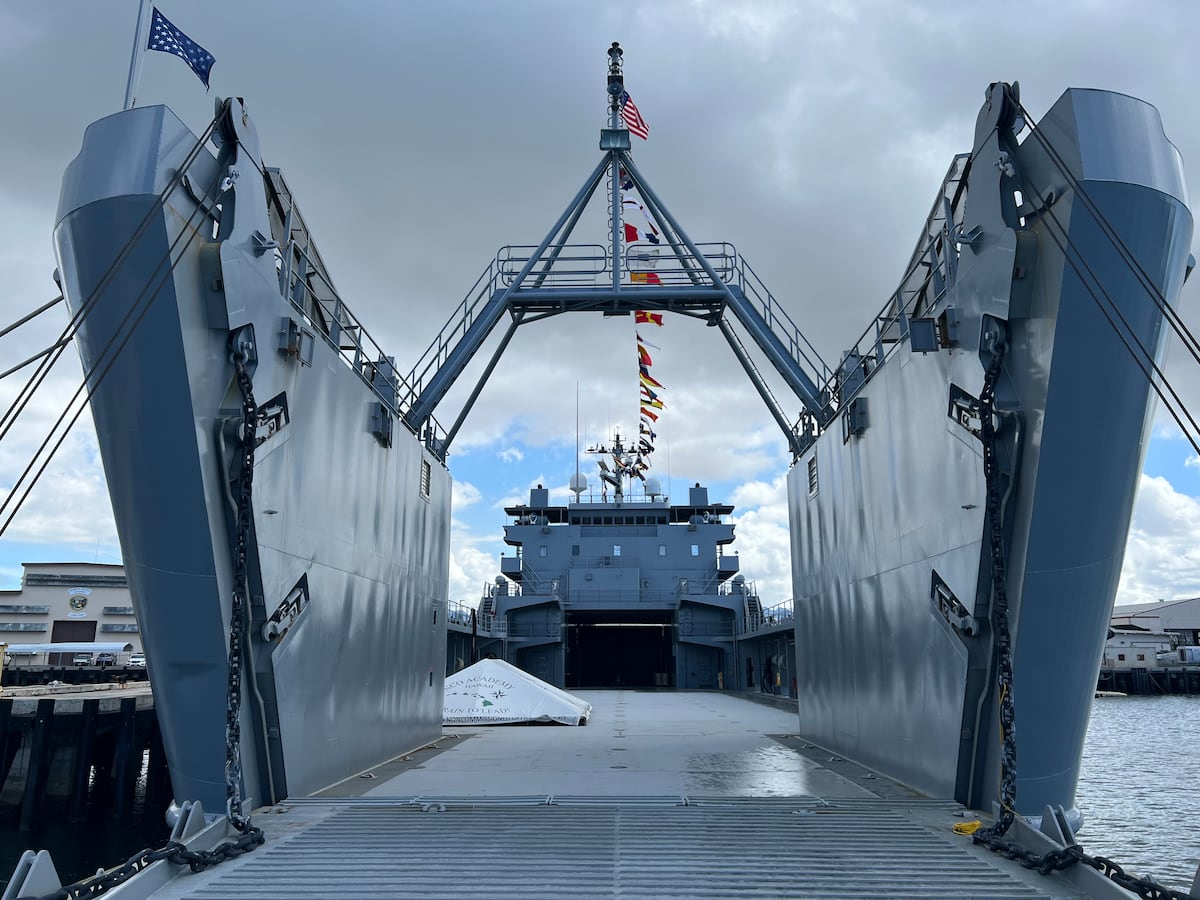- Reaction score
- 8,551
- Points
- 1,160
This thread came out of this comment -

 www.defensenews.com
www.defensenews.com
The US Navy, Marines and Army are all chasing the same defence dollars. They all have different senses of what the 80% solution looks like. Even with a massive budget, compared to Canada's, their discussions mirror the discussions on this site.
Rather than starting from the pointy end with every discussion, perhaps at least some of the discussions should start with the assumption that there is no pointy end. Then we can ask what can be accomplished with the available resources, including civilian ones. That gets us to Day Zero of Ukraine.
It also, in my view, clarifies, the gaps, both military and civil, that need addressing.
...
For me the primary issue is how do you bring our people into contact with their people and that means transport. It always has. And it always has had a strong civilian overlap. Troopships down the millenia, 18th century canals, 19th century railways, 20th century autobahns, civilian airlift.
...
Back to the US Army
To which I would add, for the Canadian context, government sponsored or subsidized commercial RoRo ferries designed for Canadian waters.
...
One of the key elements then becomes manning the vessels and defending the vessels. And those are areas where Reservists should be engaged. Properly civilians who submit to military command in times of national emergency. Equally applicable to other fields such as air cargo, trucking companies and civil engineers.
The (US) Army knows it will need to integrate offshore support vessels or commercial vessels, he added. “Just like every operation, we’ve had commercial trucks, and other capabilities integrated into our operations. Watercraft are the same way; we’re never going to build enough watercraft for the military and so we have to leverage the commercial capabilities that are out there.”

Pacific exercises help to shape US Army’s watercraft strategy
The Army needs watercraft in the Pacific and is shaping a strategy based on lessons learned from operations during major exercises in theater.
The US Navy, Marines and Army are all chasing the same defence dollars. They all have different senses of what the 80% solution looks like. Even with a massive budget, compared to Canada's, their discussions mirror the discussions on this site.
Rather than starting from the pointy end with every discussion, perhaps at least some of the discussions should start with the assumption that there is no pointy end. Then we can ask what can be accomplished with the available resources, including civilian ones. That gets us to Day Zero of Ukraine.
It also, in my view, clarifies, the gaps, both military and civil, that need addressing.
...
For me the primary issue is how do you bring our people into contact with their people and that means transport. It always has. And it always has had a strong civilian overlap. Troopships down the millenia, 18th century canals, 19th century railways, 20th century autobahns, civilian airlift.
...
Back to the US Army
The Army is now watching the Marine Corps’ Offshore Support Vessel program. The vessel was at Project Convergence at Camp Pendleton, California, earlier this spring. “That’s in theater right now, as I understand it, for about 90 days to learn and grow.”
Gingrich said he’d asked for a report assessing its performance. “That could be an option, but we are very closely tied to the Marine Corps and what they’re doing,” he said. “Even if we do pursue an MSV-H, we won’t have it for a long time. So what do we do in the interim?”
One solution would be to pursue something commercially, according to Gingrich. “When I say commercial solution, it could be something that we buy, a used craft, and man it. Or some other version where we truly just are contracted. I don’t know yet.”
As watercraft get larger, Helwig noted, moving around areas in the Pacific, particularly archipelagos with shallow water, are challenging and so the Army is looking at “what commercial capabilities are out there as well when it comes to offshore support vessels, commercial shallow draft vessels that might help us out. What kind of barging capabilities are there?”
To which I would add, for the Canadian context, government sponsored or subsidized commercial RoRo ferries designed for Canadian waters.
...
One of the key elements then becomes manning the vessels and defending the vessels. And those are areas where Reservists should be engaged. Properly civilians who submit to military command in times of national emergency. Equally applicable to other fields such as air cargo, trucking companies and civil engineers.

